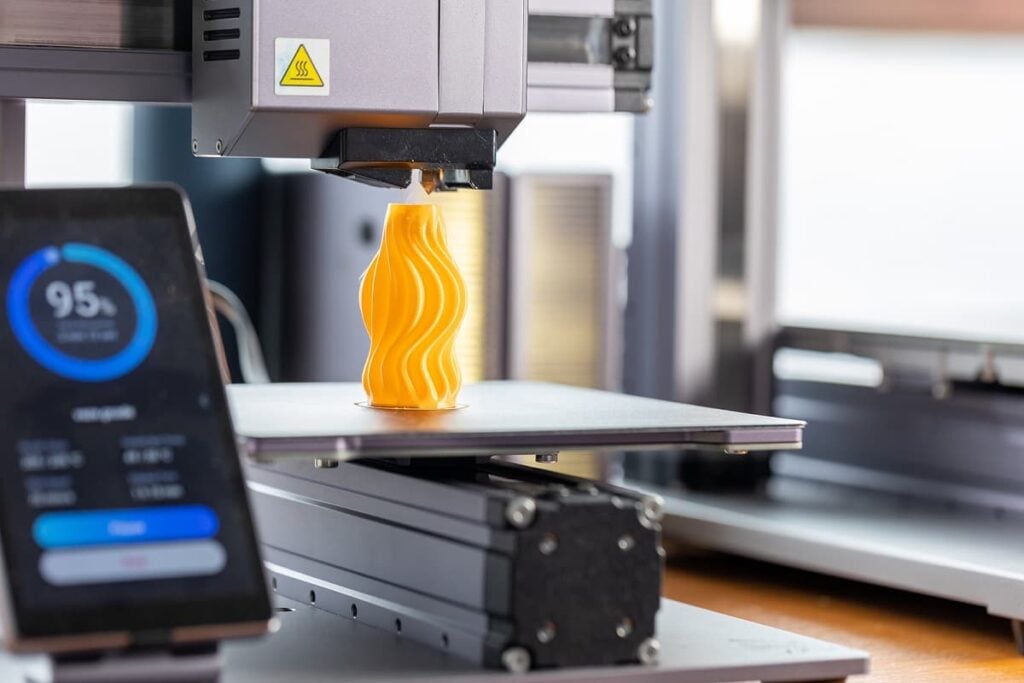What if 3D Printing was 1000x Faster?
Table of contents
Table of contents

What if 3D Printing was 1000x Faster?
Just a few months ago, an interesting 3D printing startup emerged from stealth mode called Carbon3D. The Company took the 3D printing community by storm with their claim of a new 3DP technology that was up to 100X faster than current methods. The unveiling of this company’s technology was in the form of a TED talk titled “What if 3D printing was 100x faster?“. The talk was given by Joseph DeSimone, one of the three founders of Carbon3D, all of whom are materials scientists. Carbon3D’s technology is called Continuous Liquid Interface Production or CLIP. During the TED talk, Mr. DeSimone went on to compare traditional 3D printing to his company’s CLIP technology which was inspired by that scene in Terminator 2 where the T-1000 emerges from a puddle of fluid. During the ten-minute talk, a Carbon3D printer “grows” an object from a reservoir of liquid resin in about 6 minutes as seen below:

Using traditional 3D printing methods, it would have taken over 10 hours to print that object. The technology that makes this happen. uses traditional stereolithography methods but balances the interactions of light and oxygen using sophisticated software so that they can “grow” objects continuously. Since they are growing things, there are no layers so the objects are perfectly smooth and have the same appearance as injection molded parts. Through liquid delivery improvements, the CEO says he believes that Carbon3D can print up to 1000X faster than traditional 3D printers which could eventually lead to water-cooled 3D printers since the speed of printing would generate so much heat.
CLIP seems to hold astounding disruptive potential in the “3D printing industry” if it can be made commercially viable. Mr. DeSimone’s job as the company’s CEO is to commercialize this new technology and through doing so maximize shareholder value. While his academic credentials and patent portfolio (+150 issued, +80 pending) show he is technically fit for the role, what about his past history of building businesses? A look at the CEO’s bio shows that he has been quite the serial entrepreneur having co-founded the following 3 successful start-ups:
- Micell Technologies is a cardiovascular company that is enhancing the performance of medical devices with innovative drug-delivery systems. Their lead product, MiStent, is stent with drug release capabilities that has been successfully CE marked (the equivalent of FDA approval for Europe). A full commercial launch is planned for the second half of 2015 in selected countries within Europe, Middle East, South-East Asia and Latin America.
- Bioabsorbable Vascular Solutions was established in March 2003 and acquired by Guidant in 2004 for consideration of at least $16 million. The Company was developing stents that could not only release drugs but that would be fully absorbed by vascular tissue following the restoration of blood flow in patients with coronary artery disease.
- Liquidia Technologies is developing PRINT (Particle Replication in Non-wetting Templates), a proprietary system for precision molding nanoparticles and microparticles. The Company claims it is “the only technology in the world capable of independently designing and manufacturing precision particles of virtually any size shape and chemistry”. In 2012, Glaxosmithkline acquired exclusive rights to research and develop vaccine and inhaled product candidates using Liquidia technology in a deal said to be as worth as much as several hundred million dollars. In 2013, Liquidia spun off another company called Envisia Therapeutics. Envisia took in $25 million in Series A funding and will use the PRINT platform to develop an extended-release glaucoma treatment.
Conclusion
Mr. DeSimone certainly has the commercial savvy needed to bring this technology to market. As he quipped in his presentation, “there are mushrooms that grow faster than 3D printed parts”. Speed is a desirable attribute in 3D printing and Carbon3D needs to capitalize on their first mover advantage and bring this technology to market quickly. Initial funding for the Company was provided in 2013 by prominent VC firm Sequoia Capital and a second round last year brought many additional VCs in bringing the total invested in Carbon 3D to $41 million. Just last month Autodesk (NASDAQ:ADSK) invested an additional $10 million. Carbon3D has the leadership and financial means to commercialize CLIP. Sequoia would certainly have thought out the path to a liquidity event for this investment. If this means an IPO or an acquisition by a publicly traded 3D printing company like Stratasys (NASDAQ:SSYS), retail investors may be able to get some exposure to this exciting technology.
Sign up to our newsletter to get more of our great research delivered straight to your inbox!
Nanalyze Weekly includes useful insights written by our team of underpaid MBAs, research on new disruptive technology stocks flying under the radar, and summaries of our recent research. Always 100% free.













